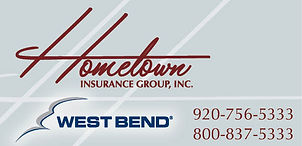Danger of deer vs. vehicle crashes rises in June
- The Brillion News

- May 30, 2019
- 3 min read
MORE PEOPLE, MORE CARS, MORE ODOCOILEUS VIRGINUS = MORE CRASHES
Posted at 10:50 a.m. on May 30, 2019
The Brillion News
The month of June typically sees an increase in deer activity, and the Wisconsin Department of Transportation (WisDOT) and State Patrol are reminding motorists they need to be extra alert. This is especially true for motorcyclists.
Deer activity increases in June as females search for places to give birth and young deer separate from their mothers.
While crashes between deer and motor vehicles tend to peak in the fall, June is when motorists are most likely to be injured in a deer-vehicle crash. Last year in Wisconsin, 515 motorists were injured in deer-vehicle crashes and four people were killed – and all four fatalities were motorcyclists.
“This time of year, we typically see an increase in vehicle speeds and traffic volumes along with more motorcycles and deer along roadways,” said David Pabst, Director of the Bureau of Transportation Safety.
In addition, with the greening of brush and woodlands along highway, it is harder for motorists to see deer in time to slow down or stop to avoid a crash. Roads where woods come close to the roadway or where highway rights oF way are narrow are more dangerous.
Last year in Wisconsin, law enforcement reported 20,177 deer-vehicle crashes. Counties with higher traffic volumes and significant deer populations see the most crashes.
A 2006 study by the Michigan DOT showed these factors increased the risk of a deer-vehicle crash (DVC):
13 times greater risk at speeds over 55 MPH than under 50 MPH
10 times greater risk on 2-lane road than on highways with 4+lanes
17 times greater risk after dark or in unlighted areas than during daylight hours
3 times the risk in fog, even light fog
The highest incidence of DVC is between 6 and 7 a.m. and 6 and 7 p.m., with high risks before 6 a.m. and after 7 p.m. (twilight risk)
The DOT offers the following tips to avoid deer crashes and motorist injuries:
Slow down, eliminate distractions, and make sure all vehicle occupants are buckled up.
Deer can be seen at any time, but are most active in early morning and evening hours.
If you see one deer cross in front of you, watch for more. One long blast from your vehicle’s horn may frighten the animal away. This time of year, most does have fawns with them.
If a collision with a deer is unavoidable:
Brake firmly. Stay in your lane.
Avoid sudden swerving which can result in a loss of vehicle control and a more serious crash.
The one exception is if you are operating a motorcycle, in which case you should slow down, brake firmly and swerve if necessary to avoid hitting the deer. Try to stay within your lane to avoid hitting other objects.
If you do hit a deer:
Get your vehicle safely off the road if possible and call law enforcement. Be prepared to describe your specific location.
It’s generally safest to stay buckled-up inside your vehicle. Walking along a highway is always dangerous as you could be struck by another vehicle.
Don’t attempt to move an injured deer.
Motorcyclists face the greatest risk of serious injury or death in a DVC. Some tips from motorcycle rider groups:
If you see one deer there are always others because they are herd animals. Slow down immediately.
If a collision appears imminent, do not swerve. Braking hard right up to the point of impact is good, but you want to be stabilized if you do collide, which will give you the greatest chance of remaining upright.
If riding in a group, spread out. This will keep one rider who hits a deer from taking other riders down with him.
Wear protective gear. As with other crashes, no one plans to hit an animal. The only way to be ready when it happens is to be ready on every ride. Wear a helmet, especially in areas and at times of greatest DVC risk.
The increase in motor vehicle travel and deer activity this time of year also results in more car-killed-deer along Wisconsin roadways. To report car-killed-deer:
Deer carcasses on the active, traveled portion of a highway represent an urgent safety hazard and should be reported by calling 911;
If the carcass is off the traveled portion of the roadway, call a non-emergency number.
Give information (such as proximity to a mile post, exit number, or nearest intersecting highway.




%20(300%20%C3%97%20150%20px).png)


